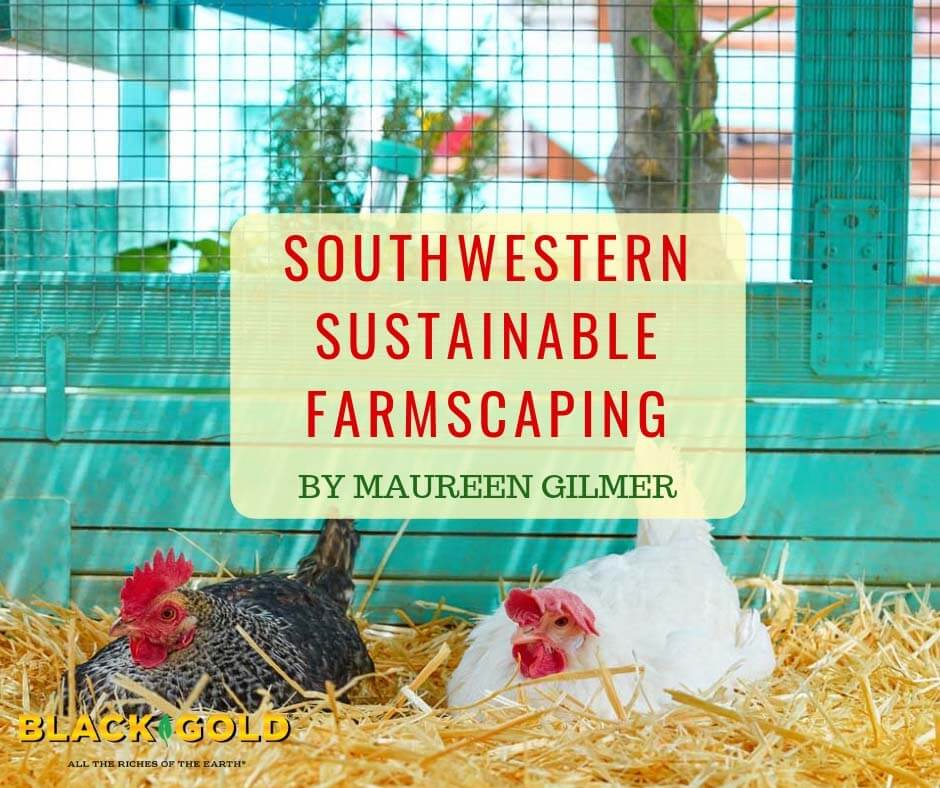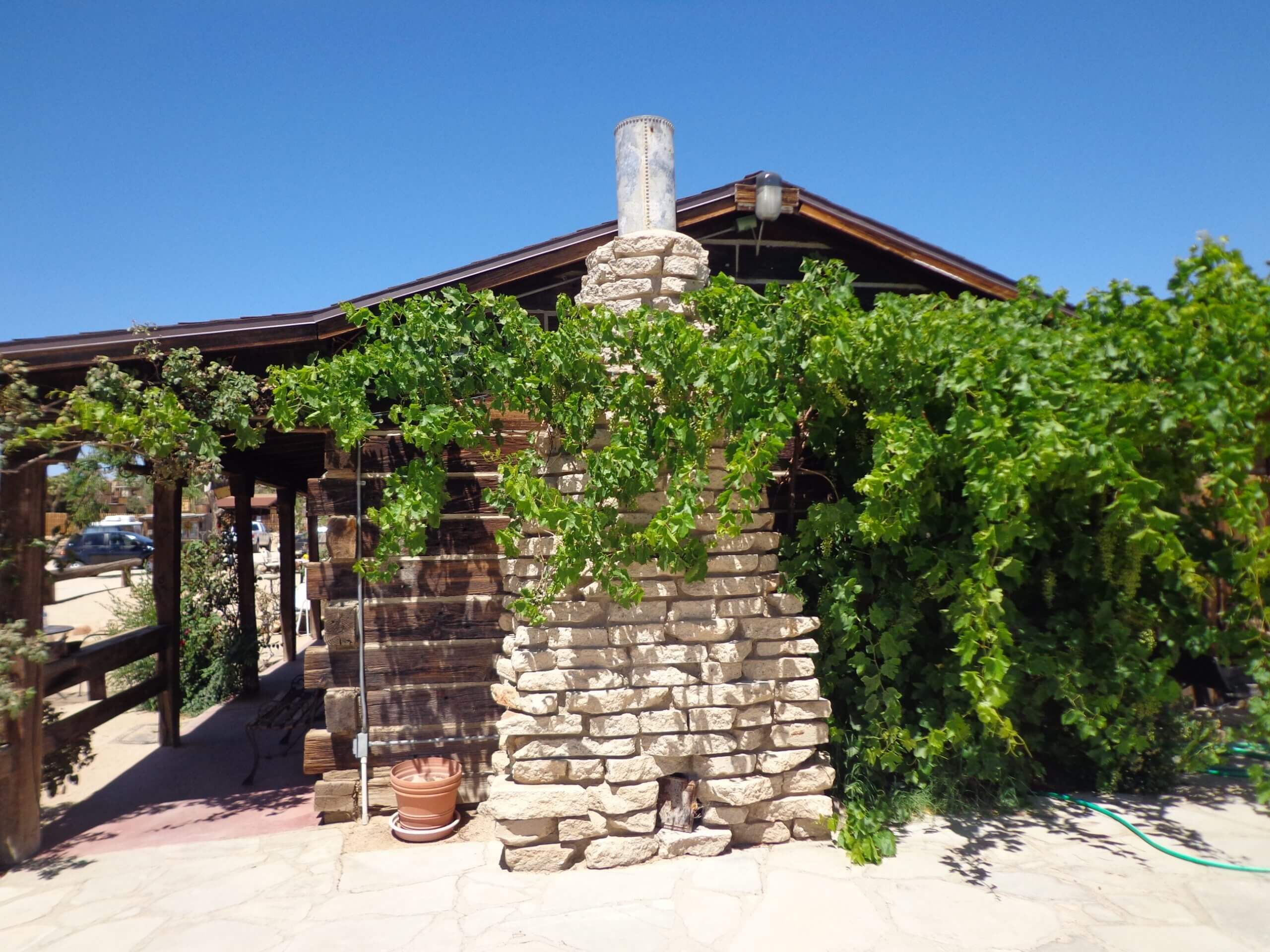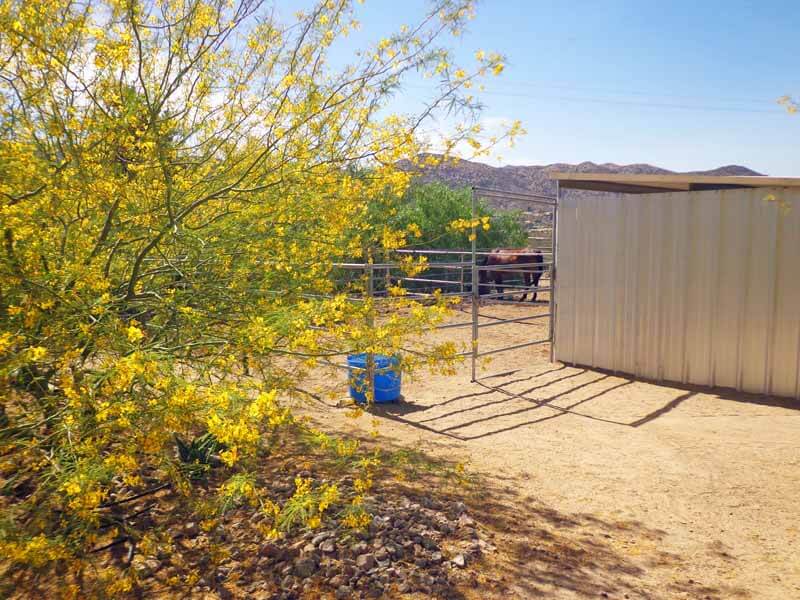
Everywhere across the American Southwest, folks are raising chickens, milking goats, horses, and grazing their own cattle. The rural way of life is evolving towards animal care and organic gardening. Dependence on livestock is creeping into the suburbs, too, where clean, efficient animal keeping is bumping up against the traditional backyard. This requires livestock areas to look good from the house, require minimal care, and efficiently benefit our homes and lifestyles. These requirements are achieved with good choices.
Small Farm Animal Needs
It starts with animal needs. Choose plants that are beneficial to livestock such as insect repelling and animal-friendly natives and exotics. These should be able to take the dust of the dry season caused by winds picking up particles loosened by animal movement on hard soil. The plants should also be able to take the reflected heat of afternoons. Hot spots occur in the uncovered ground, paving, dark shed roofs, and heat-absorbing metal animal enclosures.
Here are four strategies for sustainably supporting home livestock through smart planting practices.
Strategy 1 – Provide Good Cover

Plant deciduous vines to cover chicken coops that lack sufficient summer shade. When the leaves fall, the warming winter sun can come through. Good options are table or wine grapes or vigorous trumpet creeper (Campsis radicans). Covering open coops with summer vines also halts overhead predation by blocking the view from above. If birds of prey can’t see your hens, they won’t swoop down to take them.
Strategy 2 – Plant for Protection

Plant attractive insect-repelling herbs around the outside of your animal pens to help them blend in visually with other useful plants. Herbs with pungent oils are potent and most animals don’t graze on these plants. A pungent native option is white sage (Salvia apiana) used by Native Americans to keep pests out of homes. A mint called pennyroyal (Mentha pulegium) is also known as fleabane because it is abhorrent to fleas and other pests. Put fresh cuttings into nest boxes and blend into the bedding as a pest preventative. Other repellent candidates include fennel, lavender, rosemary, and tansy (golden tansy (Tanacetum vulgare ‘Isla Gold’) is prettiest), all of which make fine landscaping that prevents other pests and flies around pens.
Clip your herb plants to release oils into the ambient area to drive away flies. As the oils release their aroma, they also cover up unpleasant animal odors in the heat and humidity of summer.
Strategy 3 – Plant a Tree

Plant a good tree or large shrub beside every water trough and faucet. This is because water troughs must be cleaned often, and the dirty recycled wastewater is actually beneficial to plants. Make it easy to pour or siphon out your troughs for an alternative irrigation strategy when it doesn’t rain enough for a rain barrel irrigation system. These trees will also provide more comfortable trough filling for the suburban farmer and trough drinking for the animals.
(Editor’s Note: Trees can do even more. Planting working trees for livestock, also termed silvopasture, is a planting practice where the right beneficial trees for the right regions are planted in ways that allow them to become living barns, windbreaks, and even forage for your animals. (Click this USDA document to learn more.))
Strategy 4 – Avoid Dangerous Plants

Finally, avoid plants that may pose physical of chemical dangers to animals. These include poisonous plants and those with dangerous thorns and spines.
There are many plants that pose physical dangers. Be careful of spiny cacti and succulents. Just keep them well away from animal areas. Roses, barberries, and sharp yuccas are also problematic. Removing spiny weeds, like star thistle (Centaurea solstitialis), sharp foxtail grasses, and ripgut brome (Bromus diandrus), is also important.
Beware of toxic plants such as oleander, Chinaberry tree fruit, and many others, such as Euphorbias, that contain poisonous sap adapted to discourage herbivory in the wild. Some large trees, such as black cherry (Prunus serotina) are very toxic to ruminates, like cattle, sheep, and goats. (Click here to learn more about the most poisonous garden and landscape plants to avoid and, click here for a list of poisonous pasture weeds in the American West.)
Planting your livestock-inhabited yard, small farm, or ranch property properly will make animal care easier, less resource-intensive, and above all good planting can result in fewer chores. Don’t let your farmscape look like a desert wasteland or a junkyard. Every farm is a garden, every ranch a zoo. When they blend together into a holistic organic environment for humans and beasts alike, you have the ultimate family home and garden.

